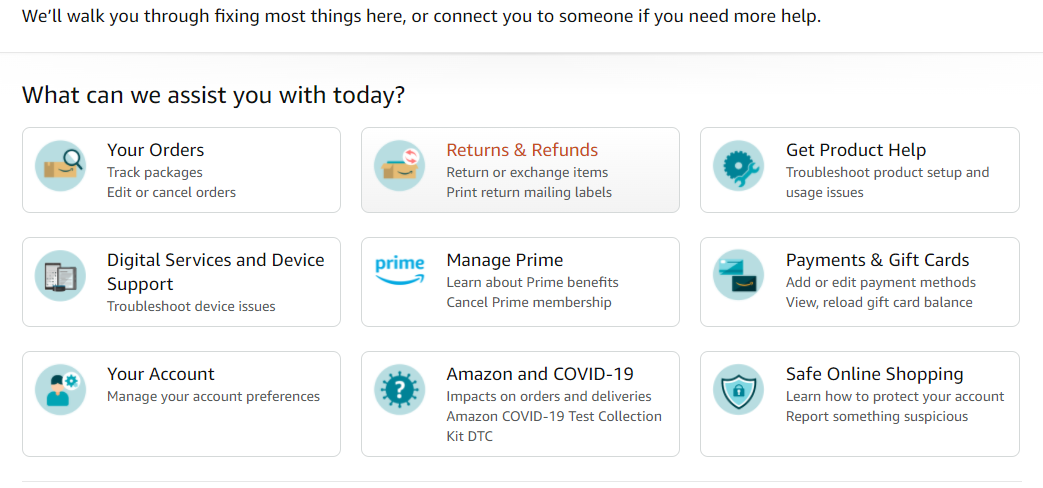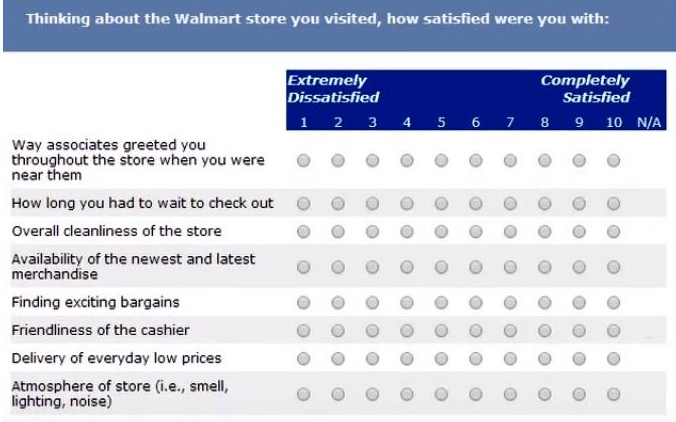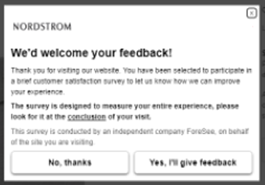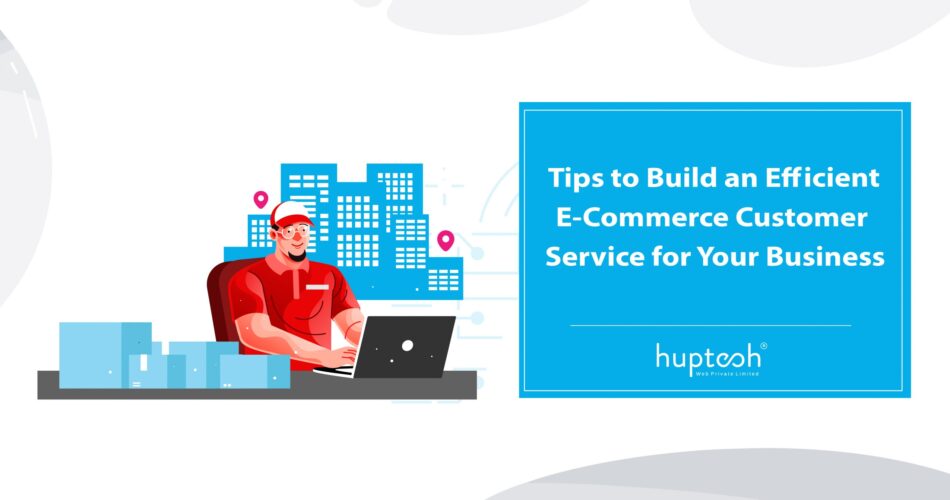Customer service resides at the core of an eCommerce business. It starts right after a potential customer lands on your website and goes a long way after they buy from you.
Here’s what the numbers say.
- Customer service is a significant decision-making factor for 90% of Americans to become loyal to a brand.
- 58% of customers will look away from a brand offering poor customer service.
- Excellent customer service and friendly staff account for 73% of loyal customers.
Taking about online shopping, the number of digital buyers shall increase to 291.2 million by 2025 in the U.S. An increase in online shoppers means more opportunities and a greater sense of responsibility for eCommerce businesses.
It’s simple—if you want to capture consumer attention, provide them with a smooth customer experience. Else, they will look for other options. So, what is that hard-and-fast rule to gain customer loyalty in an eCommerce business?
It’s eCommerce customer service. Because if customers are happy with your brand, they will not look anywhere else for their needs.
But, what does eCommerce customer service mean?
eCommerce customer service is the assistance that an online business provides its customers throughout their interaction with them. It combines strategic decisions, a customer service team, and advanced technology to assist the customers.
Today’s customers face the following eCommerce issues:
- navigation to different product pages,
- lack of product information,
- account creation,
- long check-out processes,
- lack of preferred payment methods,
- long delivery times,
- complicated return and exchange procedures, and
- lack of personal support.
No doubt, the average cart abandonment rate is 69.82%! Since the very existence of eCommerce platforms depends on customer satisfaction, eCommerce customer service should be your priority.
So, the question of the day is – how can you provide excellent customer service to your loyal eCommerce customers?
Here’s our answer!
8 Tips to build a great customer service for eCommerce business
The best approach to meeting customer expectations is:
- understand their pain points
- look for possible solutions, and
- implement them in your customer service strategy.
Here’s how you can proceed.
1. Provide omnichannel customer service
Do not limit your customer service solutions to email or contact. Why?
Pain point
Not all customers have time to draft lengthy emails to explain their grievances. In a Forrester study, while 59% of customers talked to a customer service agent, 45% used online chat.
Besides, consumers try to communicate with you over multiple channels you have a presence on. When you do not respond to customer requests on these channels, they get frustrated. They don’t like repeating their complaints on another channel you are available on.
Possible solutions
Your first step is to engage your customer support team on your sales channels. Address customer complaints then and there instead of directing them to call center or email communication.
Another essential concern is eliminating the reiteration of interactions between customers and the support team. For example, when a complaint gets transferred from online chat to a phone call, the customer service representatives should be aware of it beforehand. It enables them to start the conversation straight to solve their complaints.
To better manage customer requests and avoid reiterations, you’ll have to integrate your customer service channels.
U.K.’s high-street retailer, Asos (previously known as Topshop), is nailing omnichannel customer experience. They are actively leveraging these channels to provide their customers with an all-around customer experience:
- magazines,
- lookbooks,
- website,
- mobile devices,
- billboards, and
- social media platforms.
Implementation
You can leverage five different communication channels for eCommerce customer service.
Channel #1: Social media platforms
In the same Forrester study, social media platforms have captured a significant position as customer service channels. So, customer interaction on these platforms is pretty frequent.
Channel #2: Emails
Emails are not outdated. Customers still prefer to communicate with a support agent over mail though they expect a faster response.
Channel #3: Live chat
If you can provide real-time support to your potential customers when they navigate your website, no other platform can surpass that.
Channel #4: Phone calls
Customers are restless when they need help with their orders, delivery status, refunds, etc. If your customer service agents are just a call away, they will be the happiest with your customer service.
Channel #5: Blog
A website blog is a multi-purpose knowledge base. You can address your product’s most common queries and concerns in your blog posts.
2. Take initiative with proactive customer service
Customers appreciate it when you solve their problems before they ask you to do so.
Pain point
Customers often get irritated when they contact customer service agents for minor issues. For instance, if a customer is trying to get a refund for a product, calling a customer service agent will be their last option. Or, if the customer is expecting their parcel on a particular date and the delivery agent fails to deliver on time, it is bad customer service. It can impact their future online purchase decisions.
Likewise, sudden downtimes or website crashes can frustrate them even more. Why? Because such unexpected issues can hamper their customer experience.
Possible solutions
Be proactive. Instead of letting customers ask for support, give them the solution already. When you anticipate customer service issues like delays in shipment or delivery and provide reasonable solutions, it reflects brand loyalty.
You can improve your customers’ online shopping experience by reducing back-and-forth interactions. And, it’s possible when you proactively listen to their concerns. In return, you get customer loyalty as your reward.
Here’s how Warby Parker, an online eyeglasses retailer, wooed their customers with proactive customer support. Their campaign with the #HomeTryOn hashtag allows customers to try eyeglasses and ask expert advice on Twitter. The customer uses the hashtag to take recommendations from the retailer’s support team directly. A customer service representative from the team helps them select the right pair of eyeglasses.


That’s how you can help them compare different options before they purchase anything and then involve in return/exchange procedures.
Implementation
Method #1: Be transparent
Tell your customers beforehand if they are going to face any customer service issues. For example, if there’s a website downtime planned or a possible delay in shipment, communicate the expected duration via email.
Method #2: Keep track of their progress
You should follow up with your customers throughout their customer journey, especially when you have just resolved their complaints. Ensure that your solution was enough and they no longer face any issues.
Method #3: Don’t hesitate to apologize
If the customer is facing issues because of your unintentional mistakes like insufficient stock, send an apology email stating your reasons. If possible, make it up to them with discounts or alternatives they cannot deny.
3. Don’t let your customers wait
Consumer expectations have no bounds. So let’s see why you shouldn’t keep your customers waiting.
Pain point
Numbers speak for themselves!
- For 80% of Americans, eCommerce customer service can be governed by four essential factors:
- speed
- convenience
- knowledge base
- friendly support
- 90% of customers expect an “immediate” response for a customer service query. And for 60% of customers, “immediate” means 10 minutes.
- Two-third of customers get frustrated when customer service agents keep them on hold or make them repeat their complaints.
So, if you do not respond to their queries faster, they will switch to your competitors.
Possible solutions
It’s simple—be quick in your response and resolution. Try to incorporate resources in your eCommerce customer service team to reduce the resolution time.
An effective way to trigger your customer service is FCR (First Contact Resolution). It means you have to resolve maximum issues within the first interaction with your customers. Train your eCommerce customer service team to close tickets over one phone call or live chat conversation.
Take a look at how Amazon approaches FCR. The conversation in the image below is an illustration. It shows how chatbots or live-chat agents can quickly resolve customer complaints with the right information available. They also have a link ready for customers to request a call if they need urgent help.

Implementation
Method #1: Provide 24/7 customer support
Keep your customer service representatives engaged with your eCommerce website 24/7. Consumers want a real person to talk to them in case of immediate help.
Method #2: Outsource eCommerce customer service
If the resources at your end at not enough to handle the support operations, you can hire a dedicated eCommerce customer service team to do the job for you.
Method #3: Create response templates for common queries
Look for the most common questions customers ask during live chat, phone calls, email communication, etc. Prepare a personalized response template for each of those questions and use them for your following conversation.
Method #4: Keep a team of customer service agents ready for live chat
You won’t know when a customer can start a live chat conversation. You should keep your customer service team ready 24-hours for an immediate response.
Method #5: Make information readily available for the agents
When a customer service agent interacts with the customer, they should have complete details of the customer and their transactions. You should follow the same in the case of chatbot conversations.
4. Employ an excellent customer service team
Your eCommerce customer service team is an arsenal that can make or break your support service. Build it wisely.
Pain point
For many online shoppers, the following are primary issues related to conversations with support agents:
- waiting for a long time to speak with the agents,
- agents making promises that they cannot keep,
- unfriendly behavior from the customer service staff,
- the issue keeps looping between different departments,
- agents keep bugging them with multiple queries for the same problem, and
- many times, agents fail to resolve the issue.
Possible solutions
You need productive and agile customer service representatives who your customers can look up to in case of any problems.
If a customer calls a support agent, they should help them in every aspect of their concern. Limitations like lack of information, unavailability of senior support executives, and lack of expertise must not interfere with their shopping experience.
Let’s see how Zappos’ customer service representative looked beyond his limitation. When a woman contacted the CEO of Zappos, and he was not available to respond at the moment, his representative emailed the woman with a hilarious reply.

Implementation
Method #1. Upskill your team
Allow your customer service agents to take tickets from different departments when they have a limited workload. Let them implement cross-selling and up-selling strategies when relevant.
Method #2: Encourage individual expertise
Acknowledge the individual talents of your support team. Help them apply their knowledge base to their roles strategically.
Method #3: Equip your team with the required tools
Provide your customer service agents with online tools to automate certain tasks, gather insights, generate reports, and integrate communication channels to sync customer data.
Method #4: Hire a remote eCommerce customer service team
In most cases, when your eCommerce business needs to cut down overhead costs, a remote customer support team can do the needful.
5. Personalize eCommerce support for your customers
Personalization can lead to a 20% surge in customer satisfaction and 10-15% in conversions.
Pain point
Customers hate it when they get irrelevant recommendations or baseless answers to their queries. They don’t feel valued when you share generalized responses to their queries.
Generalized answers are the primary cause of customer dissatisfaction. And when a customer leaves your website without getting any help, they will no longer come to you. Your emails will go to the spam box, and they will switch to your competitors in search of better service,
Possible solutions
Interact with your customers personally. Understand their expectations, likes, dislikes, and preferences before you skip to resolving their queries. Even when a customer visits your site and buys something, product recommendations should be based on their purchase history and not what you want to sell them.
StichFix, an online personal styling brand, perfectly knows the ins and outs of a personalized customer experience. The clothing brand captures their customers’ individual preferences—size, color, fitting, fabric, etc. and shares styling recommendations with them. It features a personalized wardrobe for every customer by utilizing their preferences.

Besides, they also have a dedicated team of human stylists who asses customer choices and make recommendations based on them.
Implementation
Method #1: Make use of conversation history
Utilize live chat or telephonic conversations to analyze your customers’ preferences. Analyze the details to personalize your next interaction with them.
Method #2: Take insights from customers’ transactions
Keep a tab on your customers’ most frequent purchases, their specifications, brands they like, etc. Use this data to send personalized offers, discounts, and product recommendations.
Method #3: Pamper them on special days
Everyone loves gifts on special occasions. Try sending a gift coupon or discount on their anniversaries or birthdays, apart from national holidays and festivals.
Method #4: Don’t address them as “Dear customer”
It is the first rule of personalization. Address them by their names when sending them emails or in-app notifications.
6. Implement self-service in eCommerce customer support
Today’s consumers are self-reliant. They don’t want to bug you every time they need something.
Pain point
Customers want to be self-sufficient when they approach eCommerce customer service. They feel resistant to call service agents for small queries like delivery dates, tracking their orders, or requesting a refund. The process is time-consuming, of course.
Possible solutions
Let your customers leverage self-service options. Provide them with resources for their use to resolve their problems without your intervention. Not only does it saves your time, but your customer service representatives can focus on critical tickets.
Now that the customers can help themselves with minor concerns, your support team is free to help them with significant issues. You can make standard information available to them so they can look for instructions themselves.
Take a look at Amazon’s self-service help center.

Implementation
There are many ways you can make self-service a significant part of your eCommerce customer service.
Method #1: Use your website blog
Address common queries related to products in your blog posts. You can also curate buying guides for your customers.
Method #2: Leverage chatbots
Feed answers to common questions in the bots, and make sure you personalize the responses. You can also integrate your inventory, order, and customer details with the help desk software to answer more questions accurately. Don’t answer queries that require human attention with chatbots.
Method #3: Create an FAQ page
Divide your FAQ page into multiple sections like orders, refunds, product help, payments, profile, and COVID-19 help (considering the current scenario).
Method #4: Write clear policies
When you want your customers to follow particular instructions while shopping, making payments, or returning items, convey them. Draft your policies on a separate page and direct your customers to that page when required.
7. Monitor customer satisfaction and customer feedback
Customer feedback is the easiest way to deliver a pleasing customer experience. If you know what your customers want, you can make it available for them. It’s that simple. So, what’s the problem?
Pain point
Many customers complain that online brands do not ask them about their preferences or experience with a product. And even if they do, brands never act on it. Customers take time to answer surveys and questionnaires, but they don’t get satisfactory services in return.
A part of such ignorance is also visible in marketing emails or product recommendations when brands do not personalize their offers or meet consumer expectations.
Possible solutions
Every customer has a different perspective when it comes to online shopping. And many of them shop based on their instincts. They even share their experiences with their peers.
So, if you ask them for feedback, they can give you suggestions to improve your product and service. Therefore, the next time you interact with them for a purchase, they will get exactly what they want. Besides, such improvements can prove beneficial for your overall customer base.
Let’s see how Walmart and Nordstrom ask for feedback.
Walmart shares surveys with their customers to get feedback on different aspects of their service. The plus point is that the customers can answer survey questions in their language. An example of such a survey is in the image below.

Walmart analyzes these surveys to measure customer satisfaction and then asks their customers to give feedback for improvement.
Likewise, Nordstrom has an Innovation Lab for their employees to look through customer feedback and suggest strategies to act on it. They ask for customer feedback after the visitors (or customers) have spent time on their website.

Implementation
Method #1: Conduct surveys to ask for customer feedback
Customer satisfaction (CSAT), net promoter score (NPS), and email surveys are your go-to arsenals. You can also send short polls to monitor customer satisfaction.
Method #2: Utilize customer reviews
Apart from your eCommerce website, customers post reviews on social media websites or directories like Yelp. They even share their experiences online on social media stories.
Method #3: Focus more on negative customer feedback
Instead of deleting negative comments or hiding them from your website, apologize for what went wrong. Improve your products and get back with a better experience.
8. Measure the results and repeat what worked for you
It’s time to backtrack your strategies and analyze your performance.
Pain point
Customers don’t want brands to stick to the same thing for years. Their demands keep evolving, so they want the companies to evolve too.
Apart from the products and services you provide, customers want you to improve your support operations. But how will you know if you did better than the previous year? Or how will you know if something worked in your favor?
Possible solutions
You need to start measuring your eCommerce customer service efforts. Keep a tab on your team’s performance:
- how quickly are they resolving customer complaints?
- are customers satisfied with the solutions they are getting?
- how many support agents have to involve in one customer complaint?
Answer to these questions can help you understand what strategies when right and what areas still have the scope of improvement.
When you have the data and reports with you, your next step should be to continue practicing the strategies that worked for you.
Implementation
Method #1: Use metrics
To measure your performance, you need to set key performance indicators. These KPIs can help you analyze if you have reached a particular goal or not.
Method #2: Prepare reports
Reports give you a detailed description of your performance. You can also utilize help desk software to generate reports for your team’s day-to-day activities.
Method #3: Capitalize on what works for you
If your team can resolve most of the queries on live chat, invest your time and resources to improve your interaction there. Likewise, if self-service pages are working great, you can add more detailed information to them.
It’s time to practice proactively!
You have all the actionable tips ready at your fingertips. Start implementing these strategies in your eCommerce customer service. Communicate the tips and best practices to your customer service team and brainstorm with them on ways to improve your eCommerce support.



